For those liking life with a little spice, the landscape of Croatia provides a depth and variety to keep all comers happy. Stretched like a bored schoolgirl’s bubble gum around the knuckle of Bosnia, this elongated country encompasses all brands of environment and geology. From the fertile farming land and river-plains of Slavonija, (where, it is said, the highest point is the top of the nearest pumpkin), as the rich soil approaches the capital and the surrounding counties of Zagrebačka županija (Zagreb County) it starts to rise and fall. Going onwards west and then south down the spindly leg of Dalmatia, the world becomes barren, towering and increasingly dramatic as the sparse granite mountains plunge into the sparkling Adriatic, which surrounds the many small Mediterranean islands that have been spat out by the mainland.
Twenty three percent of Croatia is covered by forest. Unfortunately, as is common throughout much of the world, a lot of it is under threat; up to 50% of wood land is having acid rain dumped on it courtesy of their dear neighbours. Added to such rough treatment are the one thousand hectares per year that are torn down for logging or building projects. Eco warriors should also be armed with water buckets as in the last 25 years, fires have destroyed a whopping 7 % of Croatia’s forests. With such a wealth of potential, cringing under these risks, it is surprising that only 7.5% of the entire state territory is protected by national park status, although there is intent for that figure to rise to 15% in the near future. Hence a myriad of opportunities for those wishing to walk, breathe or explore more active pursuits in the springtime shine. Therefore IYP, humble serfs that we are, is here to lay all this wondrous nature before you like a royal feast, so you may pick out the morsels that take your fancy.
Kopački rit
In the far east of the country, tucked into a corner past Osijek known as Baranja where the Drava and Danube rivers meet is the Natural Park Kopački Rit; one of the largest natural marshes in Europe. This large flat area acts as a flood plain for the two rivers. When not completely bogged down by by these bullies, the area includes a myriad of channels and lakes that act as a conduit for the swapping of juices between the two larger bodies of water.Naturally these conditions ensure a richness of soil and nutrients, which support hundreds of varieties of flora. Meanwhile, the generally awkward environment keeps out the more destructive elements of the animal kingdom; that’s us of course; making it the perfect haven for many species of fauna. The bird life in the area is especially attractive, including heron, storks and wild duck, who battle it out for the highest stoop with rare falcons and eagles.
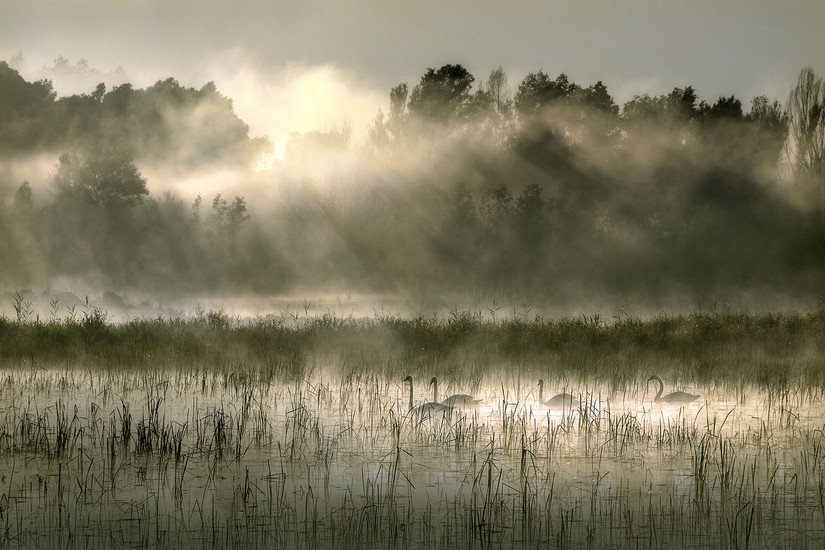
Photo by Mirsad Mujanović
Evidently humans would never stand for being left out altogether and there are a few small villages in the park. In Kopačevo one can see traditional farming in the Baranja style abd study ancient crafts such as the construction of fishing nets and traps or even how to cook up the quarry once your nets and traps have done their wicked deeds. Moving onwards the determination of the Hapsburgs to invade all corners of central Europe is evidenced by the Tikveš manor house. .
Lonjsko polje
When travelling down the main highway from Zagreb towards Slavonski Brod, should you feel the need to go flying off the road on a sharp bend then we suggest you do this around Kutina and head for the right, as then you will have a lovely soft landing, although you may get a little damp, as you’ll be landing in a swamp – Lonjsko polje. The 506km2 of meadows and forests are grazed alternatively by cattle and by fish, depending on whether the area is flooded or not – and in spring it will be. The area contains three marshes and navigable canals.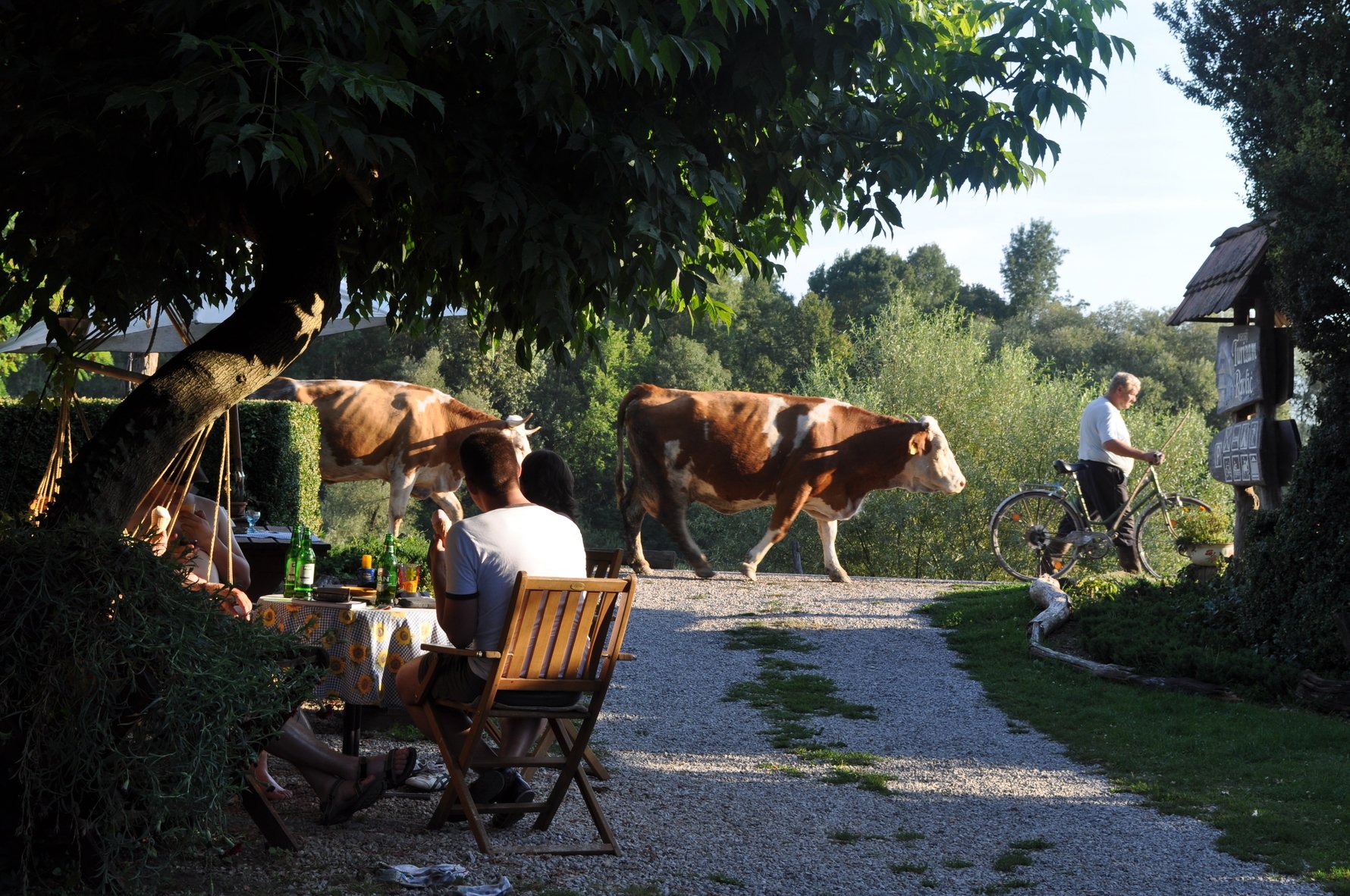
Photo by Lidija Miščin
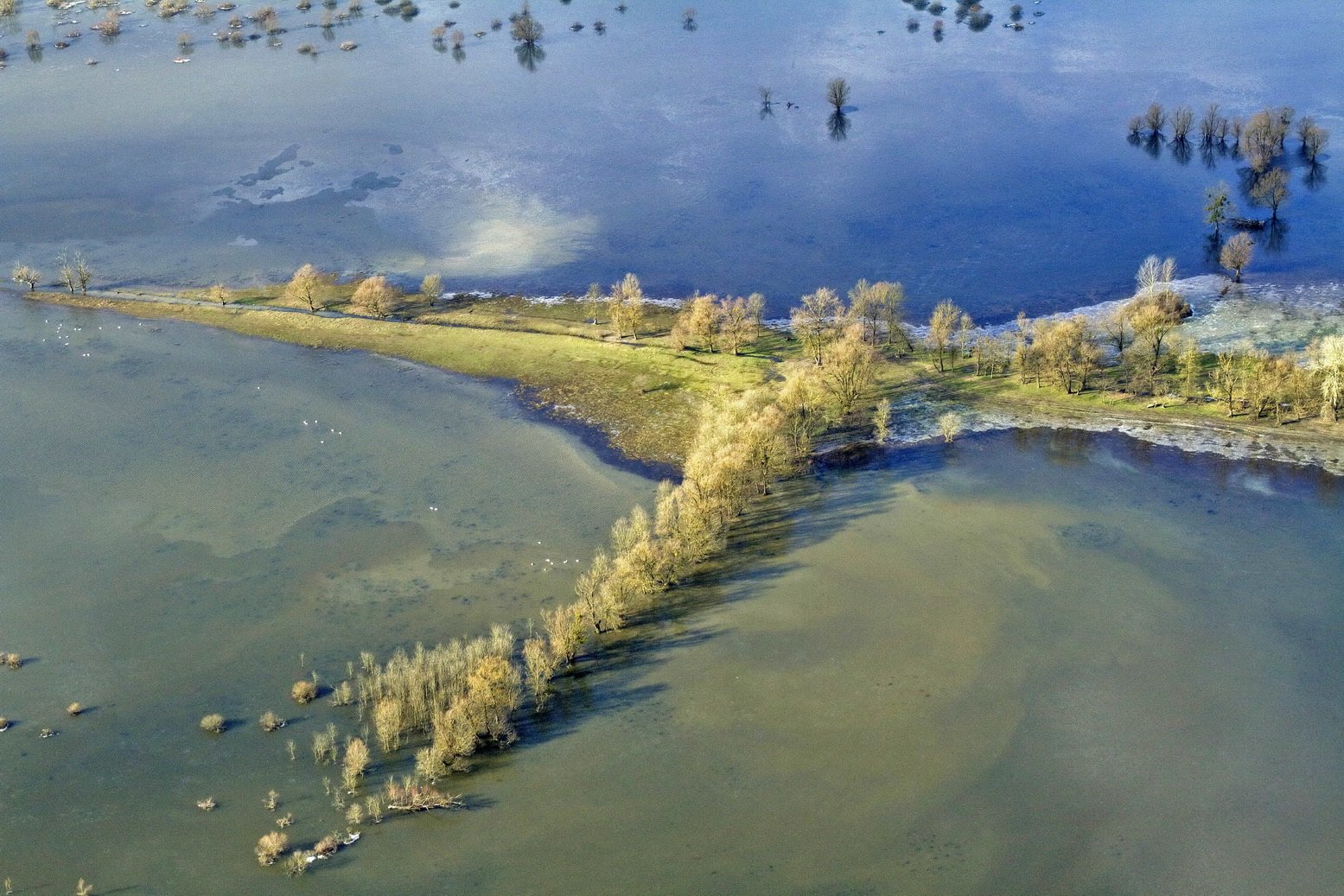
Photo by Lonjsko polje Archives
The area has a rich variety of birds and provides sightings of herons and cormorants amongst others. The main attraction in this sense is the ‘stork village’ of Čigoč. The 'New Zeland of the stork world' so to speak, the village is home to 200 stork families who have built 45 nests atop the 74 houses which house 120 human inhabitants. Happily enough for this issue of IYP, the best time for nosily intruding upon this colony of birds is between March and August. The Information Centre is at No 26. Here you can rent telescopes in order to get a better view of mum getting the kids fed and washed in time for dad getting home from a hard day's er... storking(?). Whilst the storks have many home comforts there are few for you visitors. We advise you not to wear your latest Dolce and Gabanna but something a little more appropriate for sloping about in swamp land. Also some mosquito spray may be handy. Malaria tablets, machetes and a troupe of elephants for carrying your supplies throught the jungle are of course optional extras for the more serious explorer. Absolutely necessary however are food and drink supplies as Čigoč offers no refreshments, and the information centre does not rent out guns – and shooting stork for dinner will not win you any friends. Nearby there is a birdwatching reserve where you can watch more storks as well as eagles.
Medvednica and Žumberak
To reach Medvednica, it is extremely convenient to hop on bus N°102 at Britanski trg, get off at the bright yellow Šestine church and then walk 1km directly north to the base of the mountain. Or even from Trg bana Jelačića take tram N°14 to the end (Mihaljevac) and then N°15 to the end (Dolje), then walk in a north-west direction about 100m until you see the tunnel at the entrance of the park then walk 1km to the base of Sljeme and finally take the ZET bus (instead cable car that is under construction) that shuttles up the mountain.Or, instead of cramming into the admittedly excellent public transport in order to get up here why not make the journey part of the great adventure and walk up – 1.5 to 2.5 (depending on your propensity to stop for fizzy drinks/diving behind bushes to get rid of fizzy drinks/general laziness) will get you up here and have you feeling entirely worthy and deserving of that stop-off in one of the many pubs that serve the hikers and mountain bikers up here.
The mountains really start the second one steps north of the line marked by Ilica and Vlaška through the centre of the city. Various suburbs snake up the spines of the foothills but then peter out to be replaced mainly by forest but also by villages, vineyards and orchards.

Photo by Medvednica Nature Park Archives
Apart from gallivanting in all of nature’s fresh glory there are more than a couple of other attractions in the vicinity for your pleasure. As mentioned, lesser-spotted cosy inns and lodges populate the slopes around these parts. Other distractions include the old salt mines near the Slano stream in the eastern part of the park, Rudarski vrt (Miner’s Garden) where the Zrinski family ran their 17th century silver mine and the Veternica cave; a large resource of Neanderthal remains and cave bear fossils, the majority of which are on display in the Croatian Nature Museum in the city, although some can still be seen in the cave walls. Around 70m from the entrance is a large chamber known as the ‘Zagreb Underground’ which is used for concerts. Should the performance be particularly bad then we suggest the audience can throw the minstrels down the large hole that extends for 7km into the mountain, the entrance to which is found further on in the cave. To get to Veternica Cave: Tram No 6 west to the end (Črnomerec), then bus No 124 north to the end of the route (Dubravica). Walk 500m to the end of the street and the cave is behind the houses.
Joined on to the south-west tip of the park begins another mini park; Žumberak. Nestling between Medvednica and Samobor on the one side and Slovenia on the other, this lesser known and visited range of mountains, with Sveta Gera (1178m) as its peak is perfect for exploring small authentic villages. Ancient feudal castles and old hill forts supply another outlet for your historical yearnings and desire to really get to grips with the real deal. Numerous gritty village pubs and restaurants are there to acquaint you with the best of this fertile region’s culinary delights, especially venison and freshwater fish or the excellent Plešivičko wine.
Plitvička jezera
A sultry oppression sat over the fields and mountains for months. People and animals, meadows and gardens yearned for refreshing, gentle rain. The Crna Rijeka river, ordinarily a cheerfully babbling stream, dried up. The people's prayers and pleading were all in vain the skies showed no mercy on them. But then the Black Queen with her glittering entourage appeared in the valley. The people cried for help, asking for water, without which they would all perish. And the Queen took pity on them: with great thunder and lighting, heavy rain began to fall in an instant, bringing life to the people and animals, fields and meadows. The rain poured and poured, and the waters began to grow, until they formed the lakes as we see them today."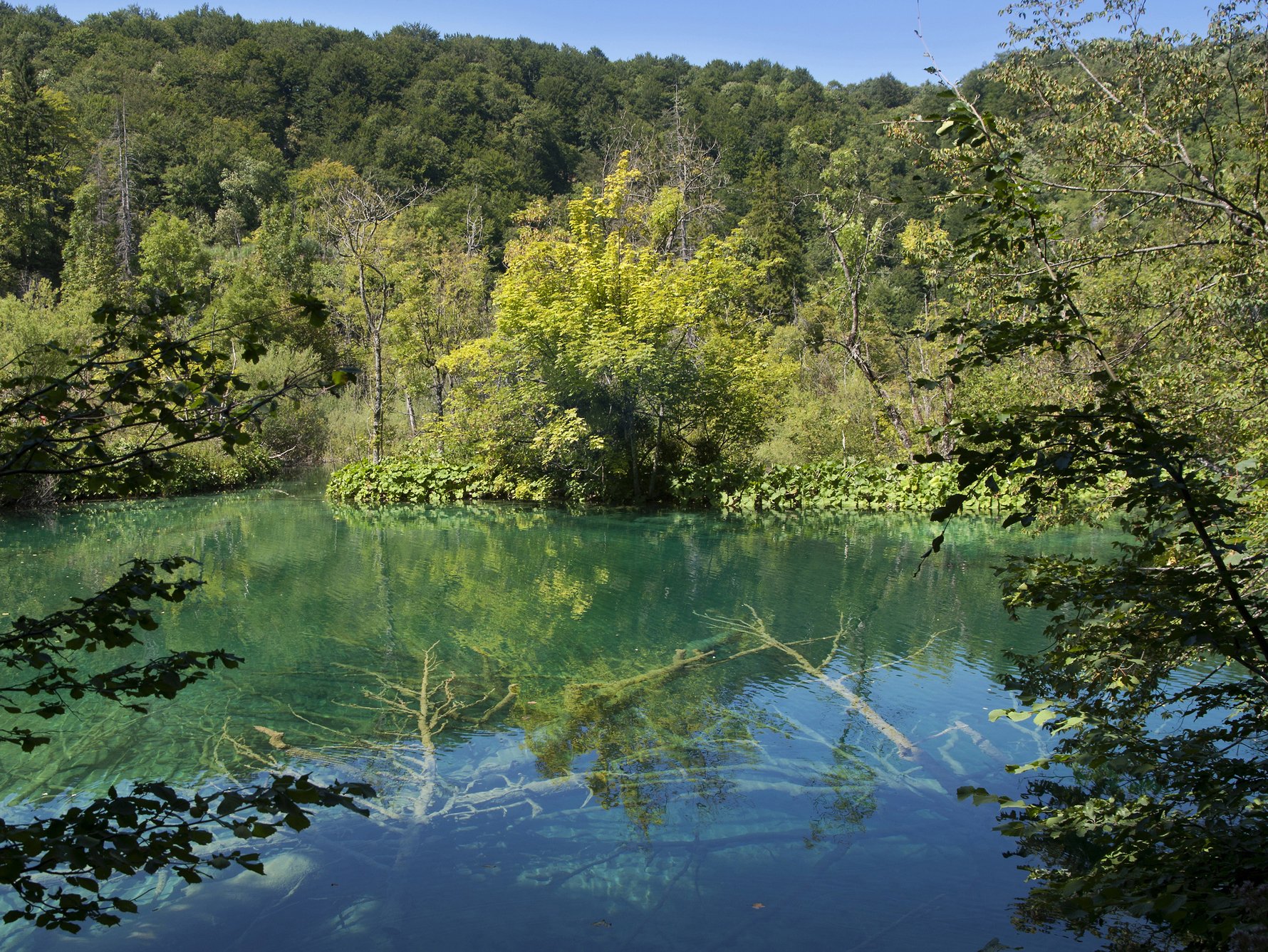
Thus reads just one of the many legends that surrounds the forming of this series of sixteen lakes that step down hill, connecting to each other by waterfalls. Plitvička jezera really is the most unique natural sight in the country, having been formed, so an alternative and more coldly scientific theory reasons, by triffids! Well, not actually triffids if truth be told; the lakes are in fact formed by lumps of moss, but how else does one think of pleasure pool building plants?
In 1910, a student of the region wrote that the lakes are ‘… rather out of the way, remote from the lively and modern thoroughfares, out in the Croatian karst, some 9 – 10 hours by coach or nine–sitter public omnibus, with a change of horse's at Jasenica’. Well you may not be depending on that type of horsepower to get here, but apart from that, should you trek down here in the summer then the experience is going to feel fairly similar – because Plitvice is now on the main thoroughfare from the north to the middle and southern parts of the coast, and believe us, this small road gets busy!
However, rest assured, the park is well worth the potentially nightmare journey. Let’s get the technical bit out of the way shall we? It is entirely true that the lakes are built by plants. The warm, aerated water of the streams that permeate the park are ideal to promote the growth of mosses. The mosses sit in the water and catch in their roots the dissolved limestone that the rough water sweeps down. This material is then called travertine. Over time this limestone hoard builds, new mosses jump on the top and round it all goes again. Leave to stew for a few thousand years and hey presto, you have yourself a series of lakes consisting of waters trapped by the limestone barriers that the mosses have built.
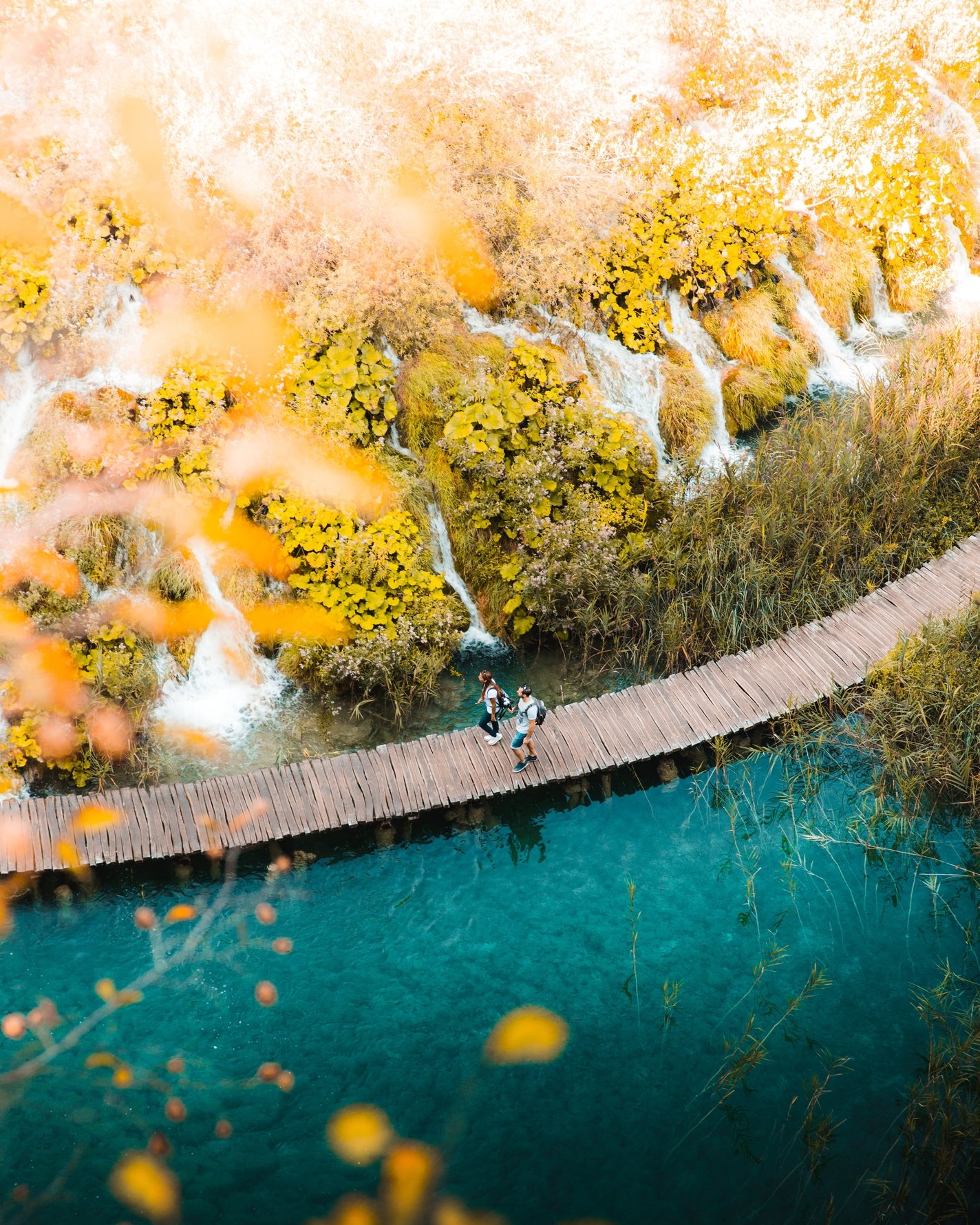
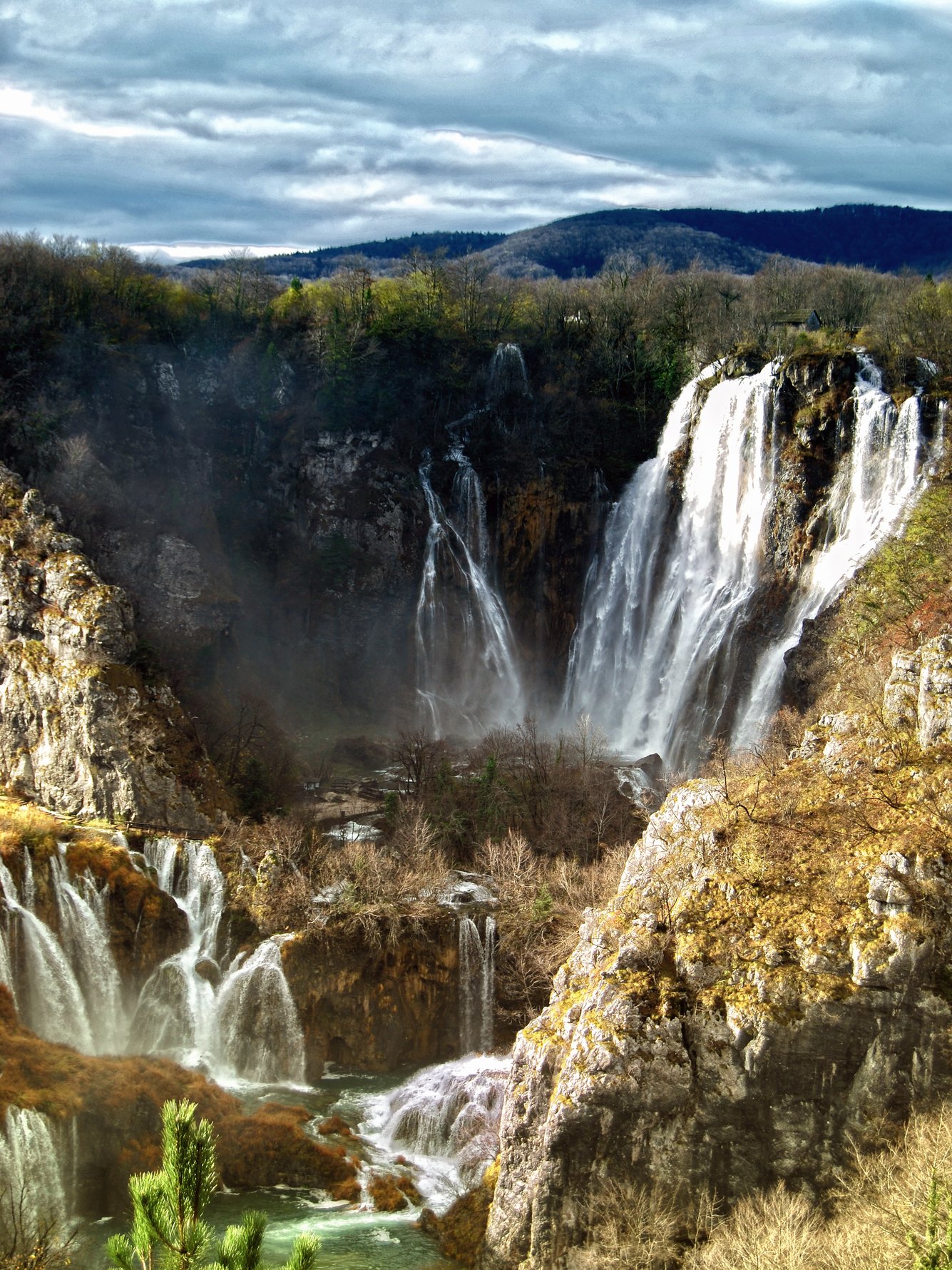
Photo by Taneli Lahtinen
Further than this, these mosses, perfectionists that they are, are not satisfied with their creation and continue to feverishly construct new barriers. Measurements of the depth of the water taken in 1855 were 3m lower that those recorded in 1958. These glistening blue and green lakes are linked by waterfalls as the water tumbles onwards down the staircase that the barriers create, the tumult ending 135m below the point at which it started, as the waters leave the final lake in the series and plunge in one last 72m dive to join numerous cascades racing to fuse with the Korana River.
Around the lakes stands dense forest with the occasional glade – mostly the result of human engineering for the sake of livestock. Many paths lead through the park and around the lakes providing you with a superb playground to wander about in, feeling insignificant in comparison to the majesty of nature; the power of the waters; the vigour of the forest; the achievements of moss.
Risnjak
Glowering above the city of Rijeka, in the densely forested Gorski Kotar region, are the primeval forests, mountain meadows and karst formed peaks of Risnjak Nature Park. This range of mountains, from which can be viewed the Julian Alps and the Adriatic is by far the wildest and most untouched in the country – mostly thanks to the somewhat inhospitable climate; it has an average temperature of 12.60 in July. This of course makes it the perfect location throughout May for Marohlinijaha – or in other words a month long dandelion picking contest.Whilst wandering around with head bent to the ground looking for the little monsters don’t forget to raise your view to watch for bigger monsters. The park is a haven for deer, bears, wildcats and lynx (ris) – from which the park takes its name. Wolves and wild boar also put in an occasional appearance.
The Information office for the park is in Crni Lug, a small village that perches at 724m above sea-level (no mean feat with the sea around 25km away) and 12km from Delnice – the main regional town. From the villages of Razloge or Kupari, small winding paths can be followed up to the source of the Kupa river. From the jagged karst the water wells up into a lake and then tumbles downwards through the ‘valley of the butterflies’.





Comments